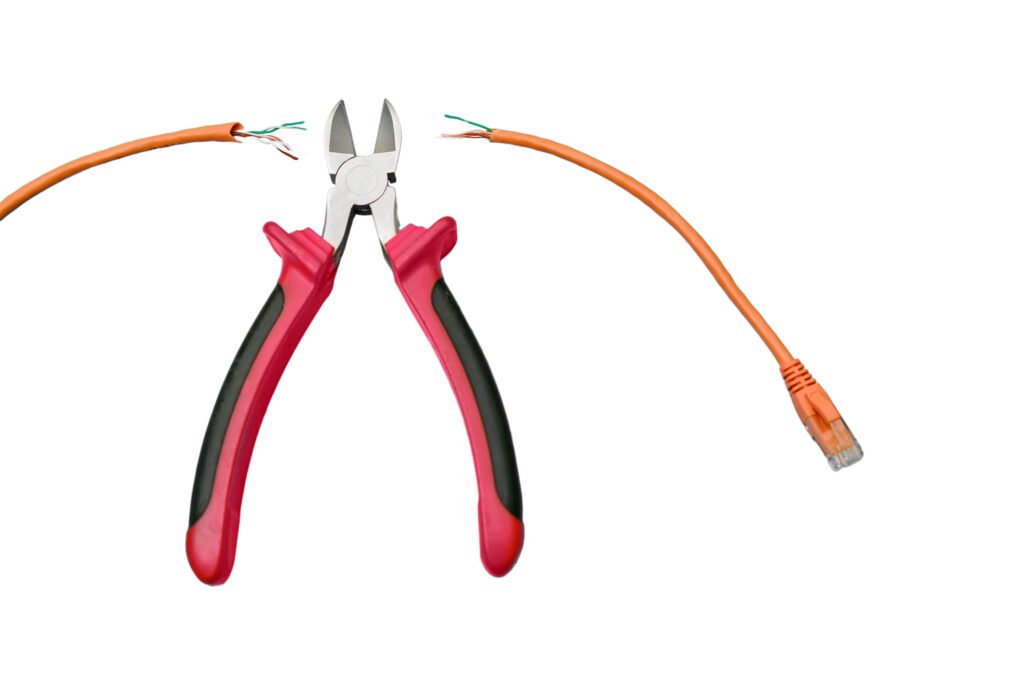
When deciding between repairing and replacing a damaged Ethernet cable, consider the following: If the cable is visibly damaged, it can often be repaired by cutting off the damaged part and using a connector to rejoin or extend the cable. However, if the cable is old, not up to modern specifications, or if you’re upgrading network equipment that requires higher bandwidth, it’s best to replace the cable altogether.

Let’s compare repairing a damaged Ethernet cable with replacing it:
Repairing a Damaged Ethernet Cable:
- Feasiblility: In most cases, repairing a damaged Ethernet cable is not feasible. It’s advisable to replace the cable instead.
- Steps for Repair (if possible):
- Cut off the damaged part of the cable.
- Strip off about 2 cm of the outer insulation.
- Untwist the wires and arrange them according to the T568B standard (orange-white, orange, green-white, blue, blue-white, green, brown-white, and brown).
- Insert the wires into an RJ45 connector, ensuring they reach the end.
- Use pliers to secure the connector.
- Test the cable with a network tester or device.
Replacing the Ethernet Cable:
- Advantages:
- New cables provide better reliability.
- Avoids potential performance issues associated with splicing or repairing.
- Cost: Ethernet cables are relatively inexpensive, making replacement a practical choice.
- Testing: Gradually replace cables to identify faulty ones. If no difference is noticed, move on to the next cable.
Remember, while wireless networks offer convenience, Ethernet cables remain the best choice for reliability. If you encounter slow speeds or connectivity issues, consider replacing your Ethernet cables for optimal performance.


